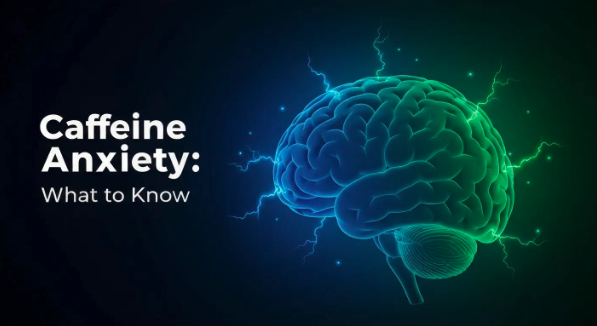Managing Self-Blame for Trauma Survivors
Learn effective strategies for addressing self-blame in trauma survivors and fostering self-compassion.


Understanding Self-Blame in Trauma Survivors
Self-blame is a common response among trauma survivors, often manifesting as feelings of guilt or shame about their experiences. Understanding the prevalence of survivor's guilt and the factors that contribute to self-blame is crucial in addressing this mental health concern.
Prevalence of Survivor's Guilt
Survivor's guilt is particularly prevalent among individuals who have experienced traumatic events in which others have died. A 2018 study conducted at a traumatic stress clinic in the UK found that 90% of participants who had survived such events reported feelings of guilt. This highlights the widespread nature of this emotional response, suggesting that many trauma survivors struggle with the feeling that they should have done something to prevent the tragedy.
The following table summarizes the prevalence of survivor's guilt among different groups:
GroupPercentage Experiencing GuiltTrauma Survivors (where others died)90%Sexual Abuse SurvivorsHigh incidencePhysical Abuse SurvivorsHigh incidence
Factors Contributing to Self-Blame
Several factors can increase the risk of experiencing self-blame among trauma survivors. One of the primary contributors is the presence of false beliefs regarding their role in the traumatic event. These distorted beliefs can lead survivors to feel as though they could have done more to prevent the suffering of others or their own pain, resulting in exaggerated feelings of guilt.
Additionally, survivors of abuse often internalize the actions of their perpetrators, blaming themselves for circumstances beyond their control. This is particularly prevalent among survivors of sexual and physical abuse, who may have been conditioned to believe they were somehow at fault. Many instances of self-blame in domestic abuse cases arise from manipulation or gaslighting by abusive partners, reinforcing the idea that the survivor is responsible for the abuser's actions.
Factors contributing to self-blame can be categorized as:
Understanding these factors is essential for trauma survivors and their support systems to begin the process of healing. Addressing self-blame in trauma survivors is a critical step toward recovery and resilience. For insights into how to effectively confront and overcome these feelings, consider exploring additional resources like navigating trauma-related guilt.

Impact of Childhood Trauma on Self-Blame
Understanding the impact of childhood trauma is essential in addressing self-blame in trauma survivors. Experiences of abuse or neglect during formative years profoundly influence an individual’s self-perception and coping mechanisms in adulthood.
Effects of Childhood Abuse and Neglect
Childhood abuse and neglect can lead to significant psychological outcomes in later life. Many individuals internalize early traumatic experiences, resulting in feelings of low self-esteem, chronic self-criticism, and irrational thinking. This internalized blame can stem from being conditioned to feel guilty or responsible for the circumstances that occurred during childhood. They may exhibit:
Emotional ImpactDescriptionLow Self-EsteemFeeling unworthy or inadequate due to past experiences.Chronic Self-CriticismOngoing negative evaluation of oneself, leading to distress.Toxic ShameA deep sense of being flawed or unlovable that affects self-worth.AnxietyExcessive worry related to past experiences and future interactions.
These effects can hinder emotional regulation, making it challenging for survivors to seek social support during times of stress. Studies show that individuals subjected to childhood abuse face a higher risk of developing PTSD in adulthood, particularly if their trauma involves a caregiver. This makes addressing self-blame a critical component in therapy and recovery.
Patterns of Self-Blame in Adulthood
In adulthood, the patterns established in childhood often persist. Individuals may continue to blame themselves for various situations, both relevant and irrelevant to their past trauma. This self-blame can manifest as:
According to PsychCentral, the inability to express emotions during childhood, such as hurt or anger, often leads individuals to turn inward when dealing with trauma. They may feel as though expressing pain is a sign of weakness, leading to a vicious cycle of continuous self-blame.
Moreover, individuals who engage in high levels of self-blame may benefit from cognitive coping strategies that empower them, enhancing their perceived control over their lives [4]. Such strategies can be crucial in breaking the cycle of negative self-attribution and fostering resilience.
By understanding these patterns and effects, those supporting trauma survivors can better address the complexities of self-blame and guide individuals towards healthier coping mechanisms and emotional healing.

Recognizing Symptoms of Self-Blame
Recognizing the symptoms of self-blame is essential for trauma survivors. Understanding the psychological impacts and behavioral patterns that arise from self-blame can assist in addressing these issues actively.
Psychological Impact of Self-Blame
Toxic self-blame can lead to significant psychological consequences. Victims may experience toxic self-criticism, chronic self-doubt, and black-and-white thinking. This kind of thinking can create high levels of anxiety, guilt, and chronic shame [5]. When individuals internalize blame instead of processing their trauma, it can contribute to a decrease in self-esteem and overall mental health.
The psychological impacts of self-blame can manifest in various ways:
Psychological ConsequencesDescriptionToxic Self-CriticismConstantly questioning one's worth and abilities.Chronic Self-DoubtPersistent uncertainty about oneself and decisions.Black-and-White ThinkingViewing situations in extremes, with no middle ground.AnxietyHeightened feelings of nervousness and worry.Shame and GuiltIntense feelings of being wrong or inadequate.
Children experiencing trauma often feel that they must blame themselves for their circumstances due to not being allowed to express feelings of hurt, anger, or betrayal. This early development of self-blame can lead to an ingrained pattern that continues into adulthood.
Behavioral Patterns Resulting from Self-Blame
Behavioral patterns stemming from self-blame can further complicate a survivor’s recovery journey. Common behaviors include poor self-care, avoidance of social situations, and maintaining unsatisfying relationships. Additionally, individuals may show signs of withdrawal or reluctance to engage in new experiences due to fear of further guilt or shame.
Some specific behavioral manifestations might include:
Behavioral PatternsDescriptionPoor Self-CareNeglecting personal health and hygiene due to low self-worth.AvoidanceSteering clear of social interactions or situations that trigger memories of trauma.Unsatisfying RelationshipsMaintaining unhealthy or toxic relationships as a result of accepting blame.WithdrawalIsolating from friends and family, preferring solitude due to feelings of shame.Chronic AnxietyExperiencing persistent worry that impacts daily functioning.
Many cases of self-blame are exacerbated by manipulation or gaslighting from abusive partners, creating a cycle where victims continuously blame themselves for the abuse they suffered. Addressing these patterns is crucial for healing, as recognizing self-blame often serves as a first step toward recovery.
For further insights into addressing these symptoms effectively, consider exploring topics related to navigating trauma-related guilt or the impact of trauma on sleep.

Strategies to Address Self-Blame
Addressing self-blame in trauma survivors is crucial for healing and recovery. Effective strategies can help in managing self-critical thoughts and fostering a healthier self-image. This section will explore cognitive coping techniques and the development of self-compassion as essential methods to combat self-blame.
Cognitive Coping Techniques
Cognitive coping strategies can empower individuals to transform their thoughts and perceptions surrounding trauma and self-blame. Techniques such as positive reinterpretation, acceptance, and distinguishing between responsibility and self-blame are particularly beneficial. Research indicates that using cognitive approaches can reduce posttraumatic stress symptoms (PTSS) for trauma survivors, especially for those who struggle with self-blame after a traumatic event [4].
Here are some effective cognitive coping techniques:
TechniqueDescriptionPositive ReinterpretationViewing the trauma from a different angle to find meaning or personal growth. This method has shown a positive correlation with decreases in PTSS.AcceptanceAcknowledging feelings and experiences without judgement, allowing the individual to move forward. While acceptance did not show a direct effect on PTSS, it remains important in emotional processing.Distinguishing ResponsibilityLearning to differentiate between healthy accountability and harmful self-blame, fostering a more accurate self-portrait.
By implementing these techniques, individuals can regain a sense of control over their lives, which is vital for reducing the impact of posttraumatic stress (NCBI).
Developing Self-Compassion
Self-compassion involves treating oneself with kindness and understanding during difficult times, rather than engaging in harsh self-criticism. Research by Carol Dweck suggests that beliefs about the self being capable of change are essential for recovery. This highlights the importance of fostering self-compassion to promote emotional healing.
Steps to cultivate self-compassion include:
Practicing self-compassion can significantly decrease self-blame and improve overall emotional wellbeing. This compassionate approach to oneself encourages healing and fosters resilience in facing past traumas.
Implementing cognitive coping techniques and developing self-compassion can be effective steps toward addressing self-blame in trauma survivors. By understanding and practicing these strategies, individuals can move toward a more empowered and balanced self-view. Further resources, such as navigating trauma-related guilt, can also provide additional support.

Importance of Social Support for Trauma Survivors
Social support plays a crucial role in the lives of trauma survivors. It can provide essential emotional relief and practical assistance, helping individuals navigate the complex feelings associated with trauma.
Protective Role of Social Support
Research shows that social support has numerous protective effects for trauma survivors. It can help buffer against negative psychological outcomes, ultimately enhancing overall well-being. Positive social connections can lead to quicker reductions in PTSD symptoms and lower rates of PTSD symptom recurrence.
Social support can come in various forms, including emotional encouragement from friends and family, practical help with daily tasks, or the presence of community resources. The nature of the support matters; functional social support—characterized by perceived helpfulness and positive interactions—is more influential than structural support, which refers to the size or complexity of one’s social network.
Type of SupportEffectiveness on PTSD RiskPositive Social SupportProtective factor against PTSDNegative Social ResponsesIncreases risk of PTSDFunctional SupportMore influential than structural support
Influence of Social Support on Recovery
The influence of social support on recovery from trauma is significant. Positive social interactions not only mitigate the risk for developing PTSD but also empower individuals during their recovery process. When trauma survivors feel supported, they are more likely to engage in healthy coping strategies and seek out treatments, further aiding their healing journey.
Conversely, the absence of support or encounters with negative social responses can exacerbate feelings of shame and self-blame, which are barriers to healing. Establishing a network of supportive relationships can enhance resilience and promote better emotional health.
For further understanding of the effects of trauma and ways to foster healing, consider exploring resources on navigating trauma-related guilt and the role of mindfulness in trauma healing.
Incorporating social support into trauma recovery strategies is a vital step for survivors aiming to overcome the burdens of their experiences.

Neural Mechanisms of Self-Blame and PTSD
Understanding the neural mechanisms behind self-blame is crucial for addressing self-blame in trauma survivors. This section will explore the neural correlates of self-blame and the functional connectivity associated with PTSD symptoms.
Neural Correlates of Self-Blame
Self-blame, particularly in the aftermath of trauma, can be conceptualized as a cognitive response to the loss of control experienced during traumatic events. This loss of control often leads to persistent feelings of helplessness, which can manifest as behavioral self-blame. Studies have indicated that behavioral self-blame is notably resistant to treatment, indicating that it can persist over time.
Neuroimaging studies suggest that specific brain regions are involved in the processing of self-blame, including the anterior cingulate cortex (ACC) and the medial prefrontal cortex (mPFC). These areas are associated with emotional regulation, decision-making, and self-referential processing.
Brain RegionFunctionAnterior Cingulate Cortex (ACC)Emotion regulation, error detectionMedial Prefrontal Cortex (mPFC)Self-referential thinking, decision-making
In individuals experiencing post-traumatic stress symptoms, there is often an observable increase in activity in these brain regions, indicating heightened processing related to self-blame and guilt.
Functional Connectivity in PTSD Symptoms
Functional connectivity refers to the interactions between distinct brain regions that enable coordination of neural activity. In trauma survivors, particularly those with PTSD, research shows altered functional connectivity among key brain areas involved in emotional and cognitive processing. Increased connectivity between the amygdala, which processes fear, and the ACC may lead to ruminative thoughts about self-blame and guilt.
Research has demonstrated a significant correlation between feelings of lack of control during a traumatic event and the presence of behavioral self-blame alongside PTSD symptoms. Furthermore, female combat soldiers are reported to be at higher risk for behavioral self-blame than their male counterparts. Addressing these neural mechanisms is essential for effective therapeutic intervention.
Understanding these elements can aid in developing strategies for trauma recovery. Engaging in dialogues about trauma can help in reshaping narratives, promoting post-traumatic growth (PTG). Continued relational engagement allows trauma survivors to redefine their understanding of self, meaning, and purpose post-exposure [7]. This integrative approach also aligns with the Integrated Biopsychosocial Model for Posttraumatic Stress Recovery (IBM-PSR) that emphasizes both intrapersonal and interpersonal coping mechanisms in trauma recovery.
References
[2]:
[3]:
[4]:
[5]:
[6]:
[7]:
[8]:
More Resources
A team ready to start your journey.
Get in touch — today.
We are a safe space – a haven for exceptional individuals to receive discreet, personalized, in-person treatment and care.
.avif)

.webp)








